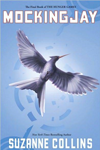
Search
Categories
Famous Authors
Top Selling Books

Book Home ![]() Books Information
Books Information ![]() Voynich Manuscript
Voynich Manuscript
Voynich Manuscript
The Voynich manuscript is a mysterious illustrated book of unknown contents, written some 600 years ago by an anonymous author in an unidentified alphabet and unintelligible language.
Over its recorded existence, the Voynich manuscript has been the object of intense study by many professional and amateur cryptographers — including some top American and British codebreakers of World War II fame — who all failed to decipher a single word. This string of failures has turned the Voynich manuscript into the Holy Grail of historical cryptology, but it has also given weight to the theory that the book is simply an elaborate hoax — a meaningless sequence of arbitrary symbols.
The book is named after the Polish-American book dealer Wilfrid M. Voynich, who acquired it in 1912. His wife, Ethel Lilian Voynich (1864-1960), is famous for the novel The Gadfly. As of 2005, the Voynich manuscript is item MS 408 in the Beinecke Rare Book Library of Yale University.
Description
The book has about 240 vellum pages, and gaps in the page numbering
(which seems to be later than the text) indicate that several pages
were already missing by the time that Voynich acquired it. A quill
pen was used for the text and figure outlines, and colored paint was
applied (somewhat crudely) to the figures, possibly at a later date.
Illustrations
The illustrations of the manuscript shed little light on its contents,
but imply that the book consists of half a dozen "sections",
with different style and subject matter. Except for the last section,
which contains only text, almost every page contains at least one
illustration. The sections, and their conventional names, are:
Herbal: each page displays one plant (sometimes two), and a few paragraphs of text—a format typical of European herbals of the time. Some parts of these drawings are larger and cleaner copies of sketches seen in the pharmaceutical section (below).
Astronomical: contains circular diagrams, some of them with suns,
moons, and stars, suggestive of astronomy or astrology. One series
of 12 diagrams depicts conventional symbols for the zodiacal constellations
(two fishes for Pisces, a bull for Taurus, a soldier with crossbow
for Sagittarius, etc.). Each symbol is surrounded by exactly 30 miniature
women figures, most of them naked, each holding a labeled star. The
last two pages of this section (Aquarius and Capricorn, roughly January
and February) were lost, while Aries and Taurus are split into four
paired diagrams with 15 stars each. Some of these diagrams are on
fold-out pages.
Biological: a dense continuous text interspersed with figures, mostly
showing small nude women bathing in pools or tubs connected by an
elaborate network of pipes, some of them clearly shaped like body
organs. Some of the women wear crowns.
Cosmological: more circular diagrams, but of an obscure nature. This
section also has fold-outs; one of them spans six pages and contains
some sort of map or diagram, with nine "islands" connected
by "causeways", castles, and possibly a volcano.
Pharmaceutical: many labeled drawings of isolated plant parts (roots,
leaves, etc.); objects resembling apothecary jars drawn along the
margins; and a few text paragraphs.
Recipes: many short paragraphs, each marked with a flower-like (or
star-like) "bullet".
The text
The text was clearly written from left to right, with a slightly ragged right margin. Longer sections are broken into paragraphs, sometimes
with "bullets" on the left margin. There is no obvious punctuation.
The ductus (the speed, care, and cursiveness with which the letters
are written) flows smoothly, as if the scribe understood what he was
writing when it was written; the manuscript does not give the impression
that each character had to be calculated before being put on the page.
The text consists of over 170,000 discrete glyphs, usually separated from each other by thin gaps. Most of the glyphs are written with one or two simple pen strokes. While there is some dispute as to whether certain glyphs are distinct or not, an alphabet with 20-30 glyphs would account for virtually all of the text; the exceptions are a few dozen "weird" characters that occur only once or twice each.
Wider gaps divide the text into about 35,000 "words" of varying length. These seem to follow phonetic or orthographic laws of some sort; e.g. certain characters must appear in each word (like the vowels in English), some characters never follow others, some may be doubled but others may not.
Statistical analysis of the text reveals patterns similar to natural languages. For instance, the word frequencies follow Zipf's law, and the word entropy (about 10 bits per word) is similar to that of English or Latin texts. Some words occur only in certain sections, or in only a few pages; others occur throughout the manuscript. There are very few repetitions among the thousand or so "labels" attached to the illustrations. In the herbal section, the first word on each page occurs only on that page, and may be the name of the plant.
On the other hand, the Voynich manuscript's "language" is quite unlike European languages in several aspects. For example, there are practically no words with more than ten "letters", yet there are also almost no one- or two-letter words. The distribution of letters within the word is also rather peculiar: some characters only occur at the beginning of a word, some only at the end, and some always in the middle section – an arrangement found in Arabic, but not in the Roman, Greek or Cyrillic alphabets.
The text seems to be more repetitious than typical European languages; there are instances where the same common word appears three times in a row (as if an English text contained the sequence and and and). Words that differ only by one letter also repeat with unusual frequency. In fact, the entire "vocabulary" of the text is smaller than it should be, statistically speaking.